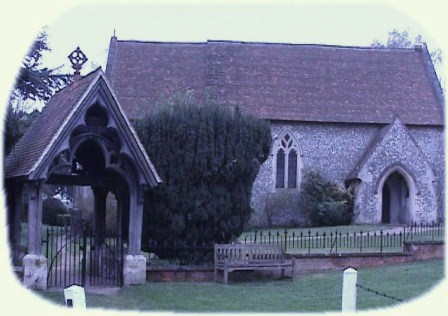
|
|||||||||
|
|
Welcome
to |
||||||||
|
Until Frieth church was built parishioners had to travel to Hambleden church for worship. Flint from the ruined wing of the former Hambleden rectory was carted by local farmers and used by Canon Ridley to build this church in 1850. The east window with scenes of The Passion, was made by Hardman in 1849 and is thought to be a Pugin design. |
click for short video of the interior
The church is noted for its Victorian stained glass and carved woodwork. Most of the furniture and carving in the church were made by the local firm of West and Collier, which was in operation from 1869-1940, and which employed a number of people in the manufacture of church furniture and chairs. Most of the beautiful stained glass windows are by Kempe and were the gift of the Cripps family. They date from 1880 and include St John the Evangelist, Abraham and Issac, Moses and the Ten Commandments (North wall), Benjamin and Joseph, and King David on the south aisle. The wheat sheaf, Kempe's later signature appears on the later windows dating from 1901. The lych gate at the entrance to the churchyard was erected in memory of Canon W.H.Ridley, the Rector of Hambleden at the time that Frieth church was built.
There are various memorials to members of the Cripps family in the church. The family lived at Parmoor House from 1860-1945, and were local landowners, employers and benefactors responsible for the enlargement of the church by the addition of the south aisle in 1872. The family included Sir Stafford Cripps, former Chancellor of the Exchequer. Parmoor House was until recently St Katharine's Convent, and is now an Ecumenical Retreat and Conference Centre. The church stands in the old graveyard, and there is a new graveyard to the rear.
|
||||||||




